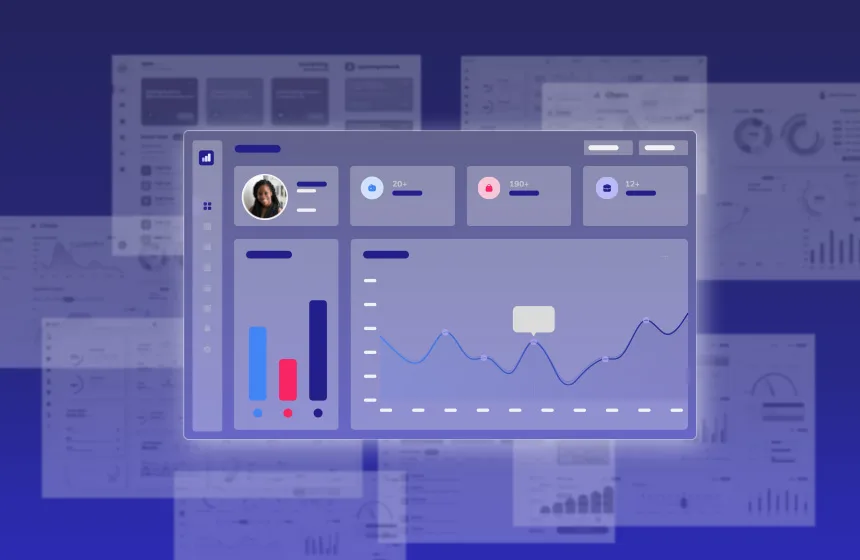Accelerate deals and increase win rates with the leading enterprise demo platform.
How to Execute the Perfect Sales Demo

January 9, 2025
Table of Contents
A live sales demo is the bridge between interest and commitment—a moment when a prospect decides whether your solution truly meets their needs. Yet, many sales teams struggle to deliver demos that resonate, engage, and ultimately convert.
Consider this: according to recent studies, 50% of prospects view poorly executed demos as a deal-breaker. The problem often lies not in the product itself but in how it’s presented. A poorly structured or overly generic sales demo can leave buyers confused or unimpressed, while a tailored, engaging demo can inspire confidence and drive action.
That’s why understanding how to execute the perfect sales demo is so important. A great demo doesn’t just showcase features—it tells a story, solves problems, and positions your solution as a must-have.
In this article, we’ll guide you through the key steps to creating impactful live sales demos, from preparation to execution. Whether you’re new to sales demos or looking to level up your process, you’ll find actionable insights to captivate your audience and close deals with confidence.
Why Sales Demos Matter
A great sales demo can be the defining moment in the buyer’s journey. It’s your opportunity to demonstrate the value of your product, address your prospect’s specific needs, and set your solution apart from the competition.
Sales demos go beyond simple explanations—they build trust. Buyers want to see your product in action, solving real problems that matter to them. A well-executed demo does just that: it showcases the solution in a way that feels relevant and relatable.
The impact of a great demo is undeniable. Studies show that companies with strong demo processes experience higher win rates and shorter sales cycles. Why? Because effective demos help prospects visualize the value of your solution, making it easier for them to commit.
But not all sales demos are created equal. Too often, they fail to engage or resonate due to lack of preparation, poor customization, or ineffective delivery. That’s where tools like Reprise come in. Reprise enables sales teams to create interactive, tailored demo experiences that keep prospects engaged and focused on the value your product offers.
By mastering the art of the live sales demo, you not only increase your chances of closing deals but also strengthen relationships with your prospects. It’s not just about selling—it’s about building confidence and helping buyers see why your solution is the perfect fit for their needs.
Preparing for a Sales Demo
Preparation is the foundation of any successful sales demo. It makes sure that you’re not just presenting a generic product walkthrough but delivering a tailored, engaging experience that speaks directly to your prospect’s needs. Here’s how to set yourself up for success:
Understand Your Audience
Before you even think about demoing your product, take the time to research your prospect.
- What are their pain points?
- What challenges do they face in their industry or role?
- How does your product align with their specific goals?
The more you know about your audience, the better you can customize the demo to resonate with them. Use discovery calls, company research, and buyer personas to gather insights.
Set Clear Objectives
Every demo should have a purpose. Define exactly what you want to achieve during the session. For example:
- Demonstrate how your product solves their key pain points.
- Highlight specific features that deliver measurable ROI.
- Address objections or uncertainties about your solution.
Having clear objectives helps keep your demo focused and impactful, avoiding unnecessary tangents that could dilute your message.
Create a Demo Flow
Structure is key to delivering a seamless demo. Build a logical flow that takes your prospect on a journey:
- Start with the Problem – Recap their challenges to show you understand their needs.
- Present the Solution – Show how your product addresses those challenges in a simple, relatable way.
- Prove the Value – Use case studies, metrics, or interactive features to reinforce your solution’s effectiveness.
Tools like Reprise can make this process easier. Reprise allows you to create customizable, interactive demos that can be reused and modified for different audiences. By having a ready-made flow, you’ll save time and maintain consistency across all your presentations.
Practice, Practice, Practice
Finally, rehearse your demo until it feels second nature. Practice not only builds confidence but also helps you spot areas that may need improvement. Record yourself or run the demo with a colleague to get feedback and refine your delivery.
Proper preparation helps make sure that when it’s time to go live, you’ll be ready to deliver a polished, impactful demo that leaves a lasting impression.
Executing the Demo
The moment of truth has arrived. Your preparation is done, and now it’s time to shine. A successful sales demo isn’t just about showing how your product works—it’s about engaging your prospect, demonstrating value, and creating a demo experience that resonates. Here’s how to execute a demo that captivates and converts:
Engage Your Audience from the Start
First impressions matter. You only have a few minutes to grab your prospect’s attention and set the tone for the rest of the demo. Start by acknowledging their challenges or goals.
- Reference something from your research or the discovery call to demonstrate that you understand their needs.
- Be concise but impactful in your introduction. Create curiosity by hinting at how your solution will solve their specific problems.
Engagement doesn’t stop at the beginning. Encourage interaction throughout the demo by asking questions and inviting feedback. This turns a passive experience into an active conversation, making it feel more personal and tailored.
Show, Don’t Tell
When you demo a product, the best approach is to show its capabilities in action, not just talk about them.
- Real-world examples: Use relatable use cases that mirror your prospect’s business challenges. This helps them visualize how your product fits into their operations.
- Live data or simulations: Instead of using static screenshots or slide decks, leverage tools like Reprise to show live, interactive demos that are dynamic and engaging. This creates a more authentic, hands-on experience, which is far more memorable than theoretical explanations.
Always focus on how your product solves the specific problems your prospect faces. Don’t get bogged down in every feature—highlight the ones that matter most to their situation.
Handle Questions and Objections
Questions and objections are inevitable during a demo, but they don’t have to be obstacles. Use them as opportunities to deepen the conversation.
- Be prepared to address common concerns, like price, ease of implementation, or integration with existing tools.
- Stay calm, confident, and positive—frame objections as opportunities to showcase the flexibility and value of your product.
- With Reprise’s interactive features, you can quickly pivot your demo to address objections in real time, making your responses more impactful and relevant. For example, if a prospect expresses concern about integration, you can immediately show how your product integrates seamlessly with their existing software.
Close with a Call to Action (CTA)
After you’ve showcased the value of your product, it’s time to bring the demo to a close. Summarize the key benefits and how your solution directly addresses the prospect’s pain points. Be clear about the next steps and how they can move forward with your solution.
- Offer to schedule a follow-up meeting or demo.
- Provide them with a trial or pilot period to experience the product firsthand.
- Direct them to your pricing page or propose an initial agreement.
A strong CTA helps transition the demo into the next stage of the sales process. Don’t leave it open-ended—be proactive and clear about what comes next.
Common Mistakes to Avoid
Even the most well-prepared sales demos can fall flat if certain common pitfalls aren’t avoided. Here are some mistakes to watch out for—and how to sidestep them:
1. Overloading the Sales Demo with Too Many Features
It’s tempting to showcase every feature your product offers, but this can overwhelm your prospect. Instead of highlighting features in isolation, focus on the ones that are most relevant to the prospect’s needs and pain points. Keep it simple and make sure that the demo stays focused on solving the specific problems your prospect is dealing with.
2. Focusing Too Much on Product Features Instead of Solutions
A mistake many salespeople make is spending too much time talking about the features of their product. While features are important, buyers are more interested in the outcome—how the product will make their lives easier, save them time, or increase revenue. Make sure your demo is solution-oriented. Relate each feature to a concrete benefit that addresses your prospect’s needs.
3. Not Customizing the Demo
A generic, one-size-fits-all sales demo doesn’t resonate with most prospects. If you aren’t tailoring your demo to your prospect’s unique situation, you risk losing their interest. Personalization is key—use data, case studies, and scenarios that reflect your prospect’s specific industry or challenges. Reprise’s interactive platform allows you to quickly customize and personalize your demos, so they always feel relevant.
4. Failing to Practice and Rehearse
While it might seem obvious, the importance of practice cannot be overstated. A poorly rehearsed demo can lead to awkward pauses, confusion, or missed opportunities to highlight key features. Take the time to rehearse your demo several times before presenting it. Practice not only builds confidence but also helps you spot potential issues and refine your delivery.
5. Neglecting to Follow Up
A demo is just one step in the sales process, but it’s easy to forget that following up afterward is key. After the demo, make sure to send a follow-up email summarizing the key points, answering any additional questions, and setting up the next steps. This not only keeps the momentum going but also shows that you’re committed to helping the prospect make an informed decision.
Avoiding these common mistakes allows your demo to be as effective and impactful as possible. It helps you stay focused, relevant, and responsive to your prospect’s needs, increasing the likelihood of a successful outcome.
How Reprise Can Help You Build the Perfect Demo
Creating a perfect sales demo isn’t just about good preparation and execution—it’s also about using the right tools to streamline the process and make your demo experience as dynamic and engaging as possible. That’s where Reprise comes in.
Reprise is a powerful demo creation platform designed to help sales teams build interactive, tailored demos without needing developer resources. It gives you the flexibility to craft custom demos that speak directly to each prospect’s needs, making your sales presentations not only easier but also far more effective.
Overview of Reprise
Reprise allows you to create personalized product demos that showcase exactly what prospects care about. Rather than relying on static, one-size-fits-all presentations, Reprise lets you create reusable, interactive demos that can be adjusted and personalized on the fly to match each prospect’s specific use case.
With Reprise, sales reps can quickly build high-fidelity demos that mimic real product environments—without writing any code. This means you can deliver a polished, engaging experience to every prospect, no matter how unique their needs are.
Key Benefits of Using Reprise
- Speed and Flexibility: Traditional demo creation processes can take days or even weeks. With Reprise, you can create, modify, and present demos in a fraction of the time. This allows your sales team to be more responsive and agile, adapting the demo to meet each prospect’s specific requirements.
- Customizable Demos for Every Prospect: Personalization is the key to engaging demos, and Reprise makes it easy. You can quickly customize content, features, and flows to tailor each demo experience for a specific prospect. Whether you’re focusing on a particular industry or solving a unique challenge, Reprise makes sure that your demo always feels relevant.
- No Need for Developer Support: Reprise eliminates the need for developer involvement in building or updating demos. This empowers your sales team to make quick adjustments and build demos on their own, reducing bottlenecks and accelerating the sales cycle.
- Engagement and Analytics: Reprise doesn’t just help you create demos—it helps you improve them. With detailed analytics on how prospects interact with your demo, you can track engagement, identify key areas of interest, and refine your demo strategy. This data provides actionable insights, helping you close deals faster and more effectively.
Conclusion
In the competitive world of sales, executing the perfect demo can be the difference between closing a deal and losing a prospect. A well-prepared, personalized, and engaging sales demo can build trust, showcase the value of your product, and move prospects closer to making a buying decision.
By understanding your audience, setting clear objectives, and executing with confidence, you can create demos that resonate with your prospects and leave a lasting impression. However, the process doesn’t have to be time-consuming or complex. With the right tools, like Reprise, you can streamline your demo creation process, making it faster, more flexible, and far more impactful.
If you’re looking to elevate your sales demos, improve engagement, and ultimately close more deals, begin to explore Reprise. With its ability to create tailored, interactive demos without the need for coding, it’s the ideal solution for sales teams looking to stand out and drive results.






